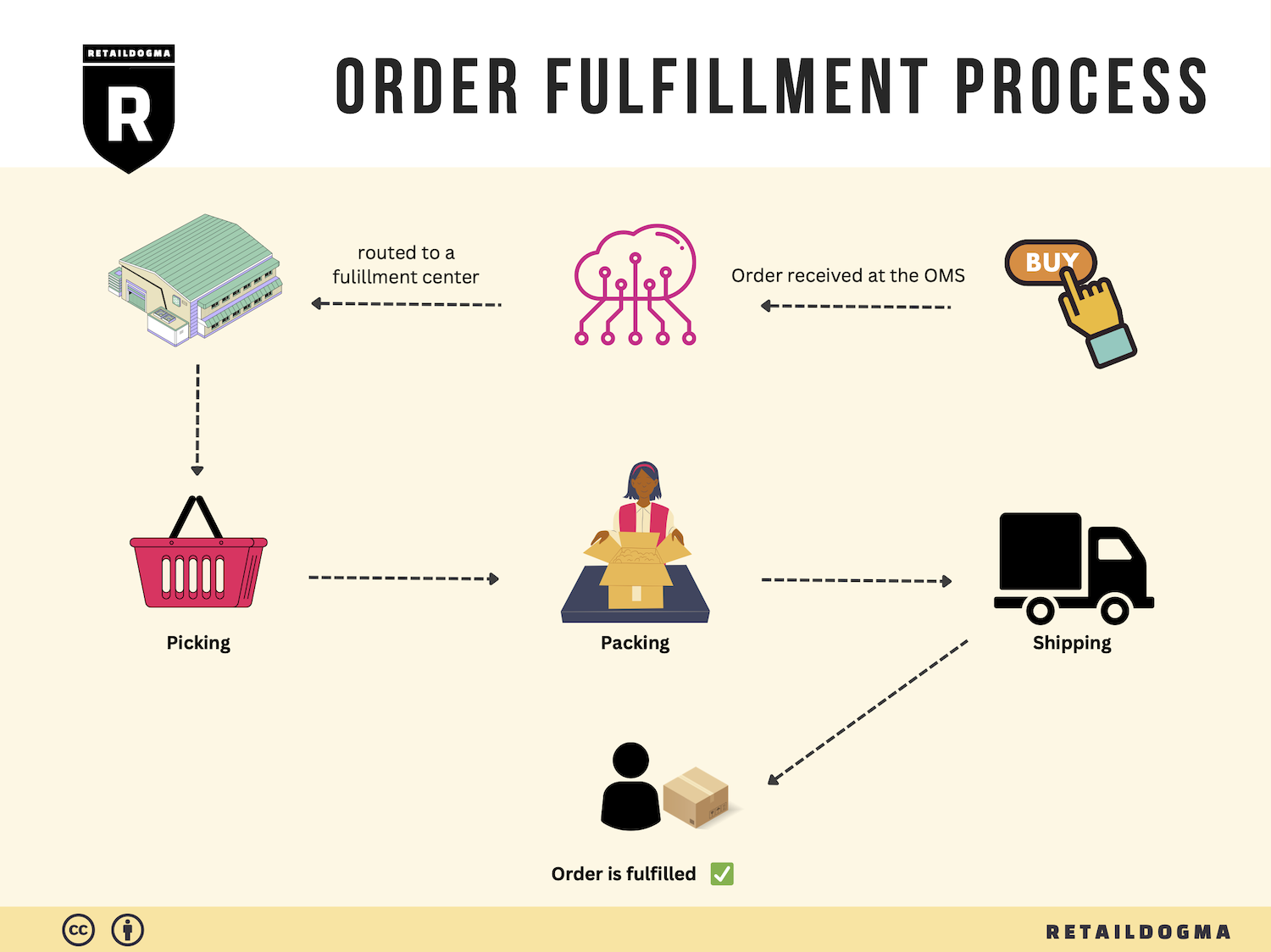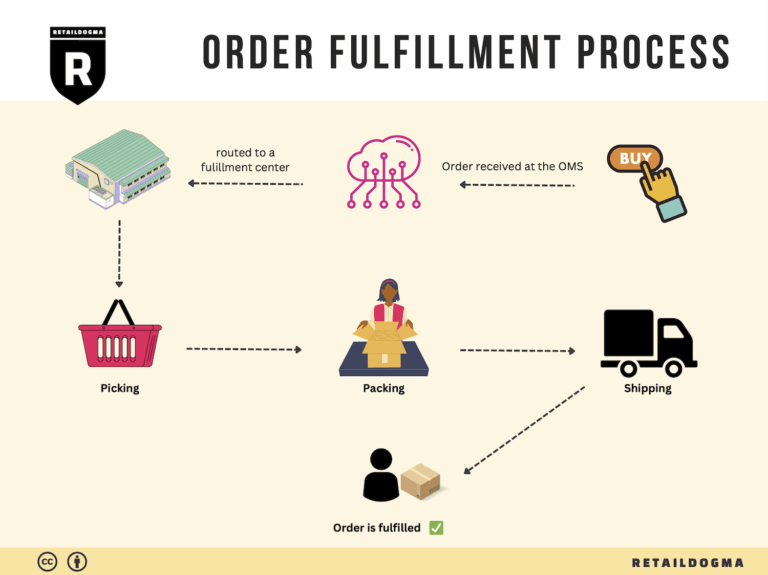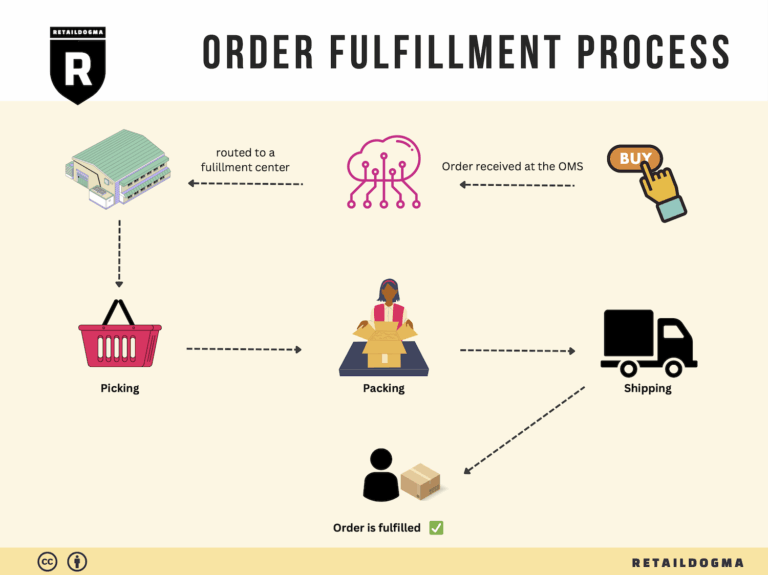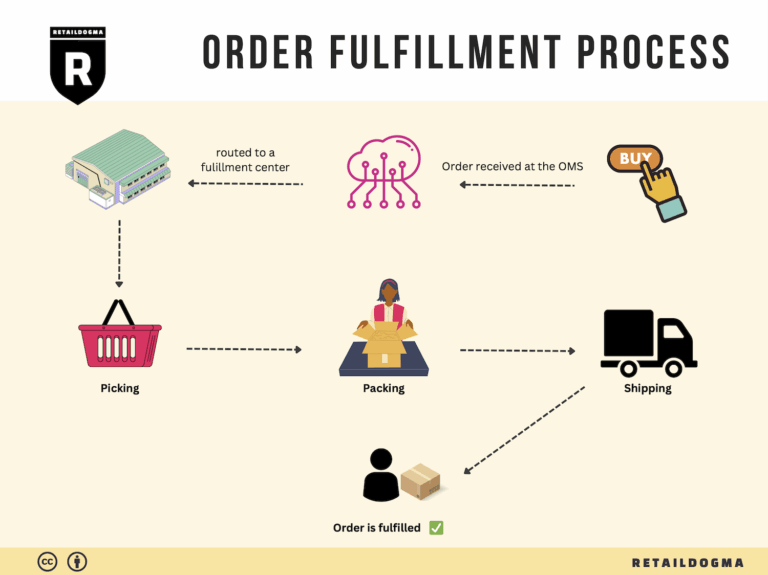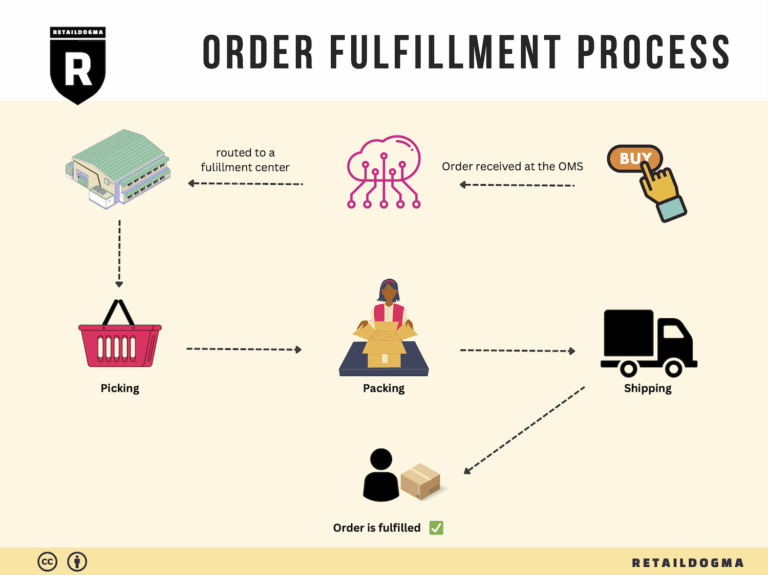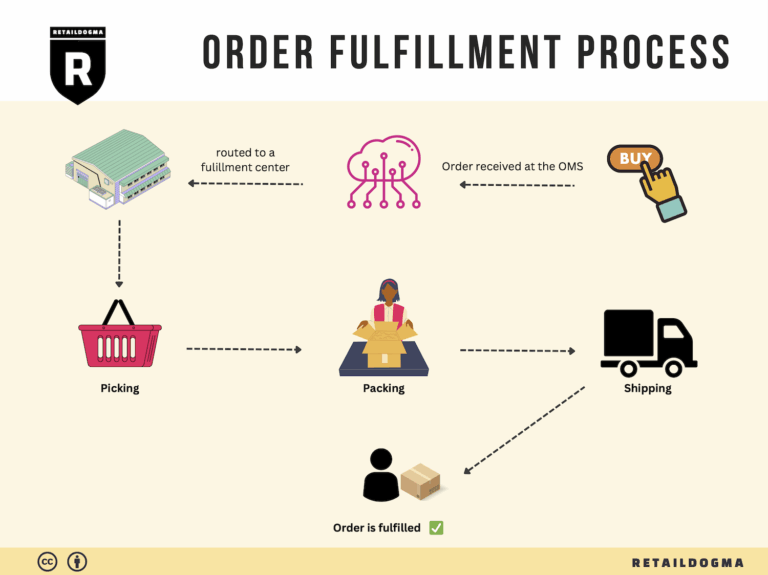Ecommerce Fulfillment Services: The Ultimate Guide (2025)
What is E-commerce Fulfillment? An Introduction for Growing Businesses
Understanding E-commerce Fulfillment
For many growing online businesses, the excitement of making sales can quickly turn into a daunting challenge when it comes to packing and shipping orders. As your business scales, managing logistics can become overwhelming. The process of ensuring that your products reach your customers in a timely and efficient manner—while maintaining quality—can drain your resources and divert your focus from growth strategies. This is where e-commerce fulfillment comes into play.
E-commerce fulfillment refers to the entire process of getting a product from your store to your customer’s doorstep. It encompasses everything from inventory management and order processing to picking, packing, and shipping. Efficient fulfillment is critical for maintaining customer satisfaction, especially in an era where consumers expect fast and reliable delivery services. As such, understanding the various fulfillment options available can help you streamline operations and improve your bottom line.
In this guide, we will explore the different fulfillment models that can support your growing business. You’ll learn about third-party logistics (3PL) providers, fulfillment by Amazon (FBA), and dropshipping, among others. Each model comes with its own set of advantages and considerations, allowing you to select the one that best fits your business needs.
Additionally, we will delve into the core services typically offered by fulfillment partners, including inventory storage, order processing, packaging, and shipping. Understanding these services will equip you with the knowledge to assess potential partners effectively.
Choosing the right fulfillment partner is crucial for the success of your logistics strategy. We will outline key factors to consider, including reliability, scalability, technology integration, and customer service. A well-chosen partner can not only enhance your operational efficiency but also serve as an extension of your brand.

Pricing is another vital aspect we will cover. Understanding the costs associated with different fulfillment models will enable you to make informed decisions that align with your financial goals.
Ultimately, this guide aims to empower you with the knowledge to make smart logistics decisions that support your business growth. By leveraging effective e-commerce fulfillment strategies, you can focus on what you do best—growing your brand and delighting your customers.
What You’ll Learn In This Guide
- What is E-commerce Fulfillment? An Introduction for Growing Businesses
- The Order Fulfillment Process: From ‘Buy’ Button to Customer’s Door
- Comparing Fulfillment Models: In-House vs. 3PL vs. Dropshipping
- A Deep Dive into Amazon FBA: Pros, Cons, and Who It’s For
- Core Services Offered by Fulfillment Centers
- How to Choose a Fulfillment Partner: A 6-Point Checklist
- Understanding Fulfillment Pricing: A Breakdown of Common Fees
- Frequently Asked Questions (FAQs) about Fulfillment
- Conclusion: Is Outsourcing Fulfillment the Right Move for Your Business?
- Important Disclaimer
The Order Fulfillment Process: From ‘Buy’ Button to Customer’s Door
1. Receiving Inventory
The first step in the order fulfillment process is receiving inventory. When products are delivered to your fulfillment center, it’s crucial to inspect and record the incoming goods accurately. This process includes checking quantities against purchase orders and ensuring that items meet quality standards.
Importance: Proper inventory receiving is essential to maintain accurate stock levels and prevent discrepancies that can lead to stockouts or overstock situations. It also establishes a baseline for your inventory management system.
Key Term: SKU (Stock Keeping Unit) – Each product should have a unique SKU that helps in tracking and managing inventory throughout the fulfillment process.
2. Warehouse Storage
Once the inventory is received and verified, the next step is warehouse storage. This involves organizing products in a systematic manner within your warehouse. Items should be stored in designated areas that allow for easy access and efficient retrieval, using shelving, bins, or pallets as needed.
Importance: Effective storage solutions not only maximize space but also streamline the order fulfillment process. When products are organized, it reduces the time spent searching for items, thus improving overall efficiency and reducing labor costs.
Key Term: Bin Location – Each item should have a specific bin location that is easily accessible, facilitating faster order picking and reducing the chances of errors.
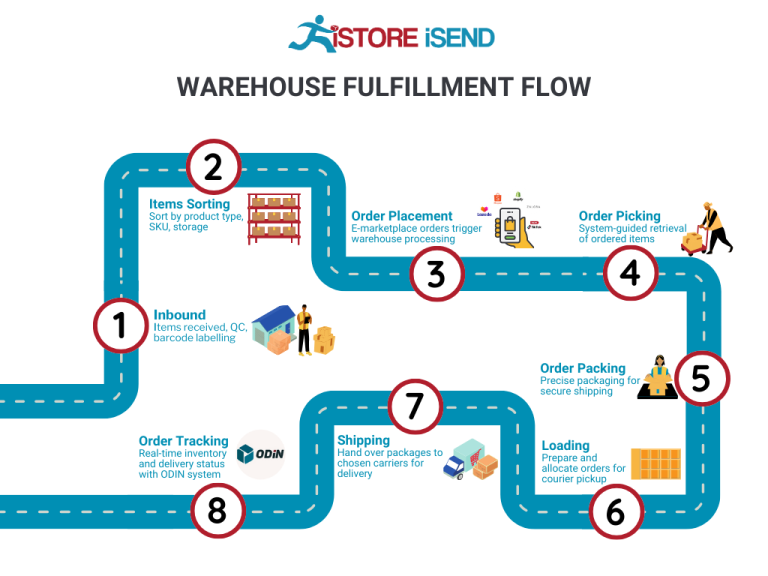
3. Order Picking
Order picking is the process of selecting items from storage to fulfill customer orders. When an order is placed, a pick list is generated, detailing the items needed and their respective locations within the warehouse. Warehouse staff then retrieve these items based on the pick list.
Importance: Accurate order picking is critical to customer satisfaction. Errors during this step can lead to incorrect shipments, resulting in returns, exchanges, and unhappy customers. Efficient picking methods, such as batch picking or zone picking, can further enhance productivity.
Key Term: Pick List – This document outlines the items to be collected for each order, including their locations and quantities, serving as a guide for warehouse staff during the picking process.
4. Order Packing
After items are picked, they must be packed for shipment. This step involves carefully placing the products into appropriate packaging materials to ensure they arrive at the customer’s door in perfect condition. It’s also the stage where branded packaging options can be integrated, enhancing the unboxing experience for customers.
Importance: Packing is not just about protection; it’s also a branding opportunity. High-quality packaging reflects your brand’s values and can enhance customer loyalty. Additionally, proper packing reduces the risk of damage during transit, which can save costs associated with returns and replacements.
Key Term: Branded Packaging – Utilizing customized packaging materials that display your brand can create a memorable experience for customers and strengthen brand recognition.
5. Shipping & Delivery
The final step in the order fulfillment process is shipping and delivery. Once orders are packed, they are labeled and handed over to shipping carriers for delivery. Tracking information is often provided to customers, allowing them to monitor their shipments.
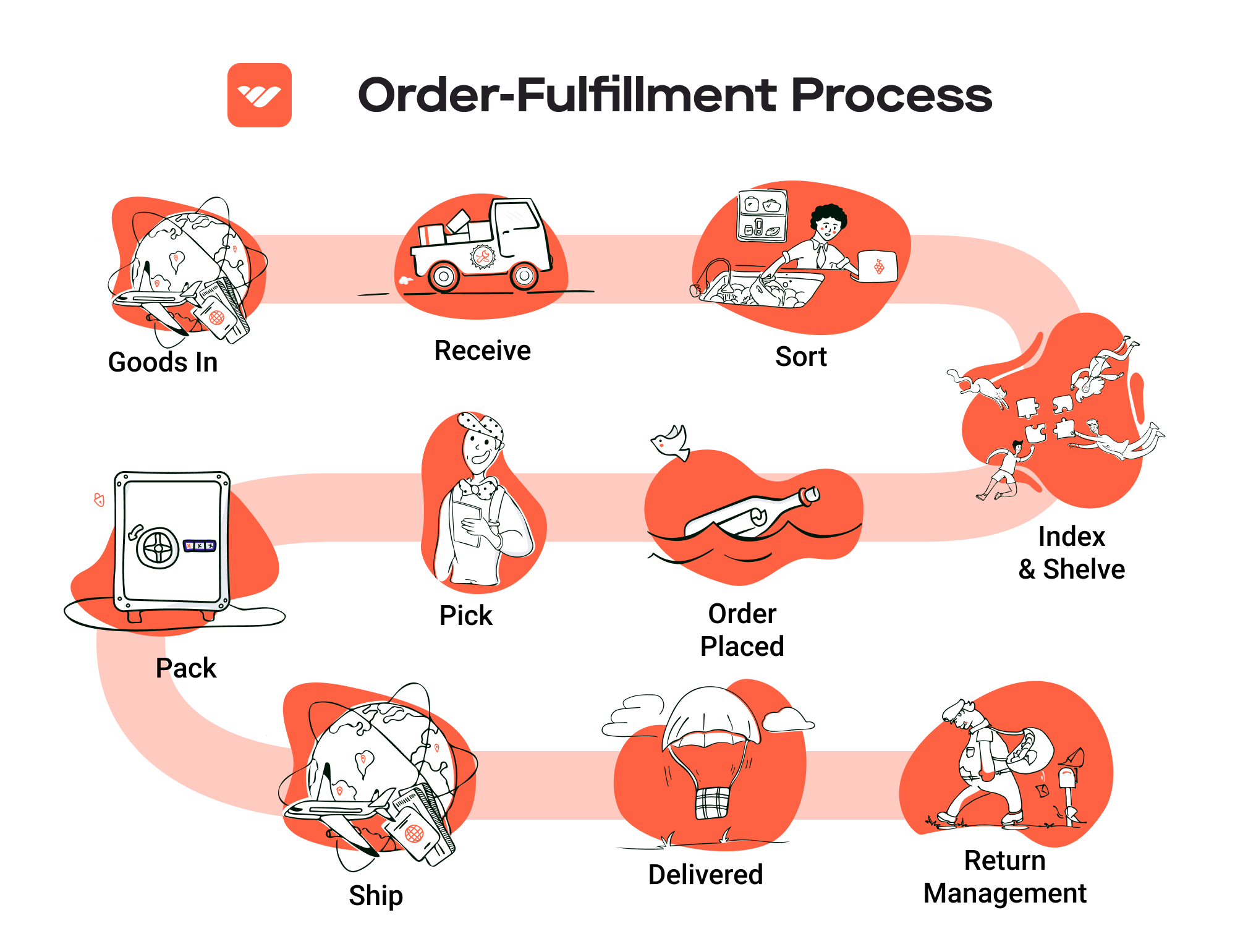
Importance: Timely shipping is a key factor in customer satisfaction. Delays can lead to negative experiences and impact future sales. Choosing the right shipping partners and methods is essential to ensure prompt delivery while managing costs effectively.
Key Term: Last-Mile Delivery – This term refers to the final step of the shipping process when the package is delivered from a distribution center to the end customer. Efficient last-mile delivery is crucial for ensuring customer satisfaction and can often be the most expensive part of the shipping process.
By understanding and optimizing each step of the order fulfillment process, e-commerce businesses can improve operational efficiency, enhance customer satisfaction, and ultimately scale their sales and logistics operations effectively.
Comparing Fulfillment Models: In-House vs. 3PL vs. Dropshipping
Fulfillment Model Comparison
| Model | Who Handles Inventory | Best For (Business Stage) | Key Advantage | Key Disadvantage |
|---|---|---|---|---|
| In-House Fulfillment | The business itself | Startups to mid-sized firms | Complete control over inventory and branding | High upfront costs and operational complexity |
| Third-Party Logistics (3PL) | A third-party provider | Growing businesses | Scalability and reduced operational burden | Less control over inventory and potential communication issues |
| Dropshipping | Supplier/vendor | Entrepreneurs and small businesses | Low startup costs and minimal risk | Lower profit margins and reliance on supplier quality |
In-House Fulfillment
In-house fulfillment involves managing the entire supply chain process internally. This includes inventory management, order processing, packing, and shipping. Businesses that opt for this model typically invest in warehousing space, equipment, and staff to handle these operations. This model is best suited for startups to mid-sized firms that have established a steady sales volume and can afford the operational costs associated with maintaining inventory. The key advantage of in-house fulfillment is the complete control it offers over inventory levels, branding, and customer experience. Companies can customize their packaging, ensure quality standards, and respond quickly to customer inquiries. However, the downside is that it requires significant upfront investment in infrastructure and labor, which can be a barrier for many small businesses. Additionally, managing fulfillment in-house can become complex and time-consuming, diverting focus from core business activities.
Third-Party Logistics (3PL)
Third-party logistics (3PL) providers offer outsourced logistics services that encompass the entire supply chain, from warehousing to shipping. By partnering with a 3PL, businesses can focus on their core competencies while leveraging the expertise of logistics professionals. This model is particularly beneficial for growing businesses that experience fluctuations in order volume and need scalability. 3PLs can handle seasonal spikes in demand, allowing businesses to expand without the need for substantial investments in warehousing and staff. The primary advantage of using a 3PL is the reduction of operational burdens; businesses can streamline their logistics processes, reduce shipping costs, and benefit from the 3PL’s established relationships with carriers. However, a key disadvantage is the potential loss of control over inventory management and fulfillment processes. Communication issues can arise, leading to discrepancies in order fulfillment and customer service, which can affect the overall customer experience.
Dropshipping
Dropshipping is a fulfillment model where the retailer does not keep products in stock. Instead, when a retailer sells a product, they purchase the item from a third-party supplier who ships it directly to the customer. This model is ideal for entrepreneurs and small businesses looking to enter the e-commerce space with minimal upfront investment. One of the main advantages of dropshipping is the low financial risk; there is no need to invest in inventory, which significantly lowers the barrier to entry. Retailers can offer a wide range of products without the need to manage stock levels or warehouse space. However, the dropshipping model also comes with challenges. Profit margins tend to be lower due to reliance on suppliers for fulfillment, and there can be issues with product quality and shipping times. Since the retailer does not handle the products directly, any issues with the supplier can reflect poorly on the retailer’s reputation. Additionally, dropshippers have limited control over branding and customer experience, as the supplier manages the fulfillment process.
Conclusion
Choosing the right fulfillment model is critical for scaling an e-commerce business. Each model—In-House, 3PL, and Dropshipping—offers distinct advantages and disadvantages that align with different business stages and strategies. Business owners must assess their operational capabilities, financial resources, and growth objectives to select the most suitable model that aligns with their long-term goals. By understanding the nuances of each fulfillment model, entrepreneurs can make informed decisions that enhance efficiency and customer satisfaction in their e-commerce operations.
A Deep Dive into Amazon FBA: Pros, Cons, and Who It’s For
Understanding Fulfillment by Amazon (FBA)
Fulfillment by Amazon (FBA) is a service provided by Amazon that allows e-commerce sellers to store their products in Amazon’s fulfillment centers. Amazon then takes care of storage, packaging, and shipping of the products directly to customers. This service also includes customer service and returns handling, providing sellers with a comprehensive logistics solution. By leveraging Amazon’s vast network and resources, sellers can enhance their reach and operational efficiency.
How FBA Works
-
Setting Up an FBA Account: Sellers first need to create an Amazon seller account and enroll in the FBA program. This process is straightforward and can be completed online.
-
Product Listing and Preparation: Sellers list their products on Amazon and prepare them according to Amazon’s requirements. This includes labeling and packaging guidelines that must be adhered to for seamless integration into Amazon’s systems.
-
Shipping Inventory to Amazon: After preparing the products, sellers ship their inventory to Amazon’s fulfillment centers. Amazon provides shipping guidelines to ensure that the products arrive safely and in compliance with their standards.
-
Storage and Fulfillment: Once received, the products are stored in Amazon’s warehouses. When a customer places an order, Amazon picks, packs, and ships the product directly to the customer. Sellers can monitor their inventory levels through the Amazon Seller Central dashboard.
-
Customer Service and Returns: Amazon handles all customer service inquiries and returns for FBA orders, allowing sellers to focus on other aspects of their business.
Pros of Using FBA
-
Prime Eligibility: Products fulfilled by Amazon are eligible for Amazon Prime, which can significantly increase visibility and sales. Prime members tend to favor Prime-eligible products due to faster shipping options.
-
Customer Trust: Being associated with Amazon adds a layer of credibility and trust. Many customers prefer purchasing from Amazon due to their reliable service and customer protection policies.
-
Multi-Channel Fulfillment: FBA allows sellers to fulfill orders not only from Amazon but also from other sales channels, such as their own websites or other marketplaces, streamlining operations and reducing logistical complexities.
-
Scalability: FBA can easily scale with a seller’s business. As sales increase, sellers can send more inventory to Amazon without worrying about the complexities of warehousing and fulfillment.
-
Time-Saving: With Amazon handling storage, packing, shipping, and customer service, sellers can save significant time and focus on growing their business.
Cons of Using FBA
-
High Fees: FBA comes with various fees, including storage fees for inventory held in Amazon warehouses and fulfillment fees for each item sold. These costs can add up, especially for low-margin products.
-
Strict Inventory Rules: Amazon has strict policies regarding inventory management, including requirements for labeling and packaging. Sellers must adhere to these rules to avoid penalties or disruptions in service.
-
Commingling Risks: FBA products may be commingled with products from other sellers. This can lead to issues if a customer receives a defective or damaged item that is not from the seller’s inventory, potentially harming the seller’s reputation.
-
Limited Control Over Fulfillment: Once products are sent to Amazon, sellers have limited control over how their products are handled. This includes packaging and branding, which can be important for brand identity.
-
Inventory Management Challenges: Managing inventory levels can be challenging, as sellers must predict demand accurately. Overestimating demand can lead to increased storage fees, while underestimating can result in stockouts and lost sales.
Who is FBA Best For?
FBA is particularly beneficial for:
-
High-Volume Sellers: Businesses that sell large quantities of products can take full advantage of the scalability that FBA offers.
-
Brands Looking to Build Trust: Companies that are new to the e-commerce space or those looking to build brand credibility can benefit from Amazon’s established customer trust.
-
Sellers with Diverse Product Lines: Businesses that offer a wide range of products can streamline their operations through Amazon’s multi-channel fulfillment capabilities.
-
Entrepreneurs Seeking Time Efficiency: For those who want to focus on marketing and product development rather than logistics, FBA offers a hands-off solution.
-
Seasonal Sellers: Businesses that experience seasonal spikes in sales can leverage FBA to manage increased order volumes without the need for additional resources.
In conclusion, while FBA provides numerous advantages, including increased visibility and operational efficiency, it also comes with challenges that need to be carefully considered. Sellers should evaluate their business model, profit margins, and long-term goals to determine if FBA aligns with their overall strategy. By understanding both the pros and cons, e-commerce business owners can make informed decisions that will contribute to their success.
Core Services Offered by Fulfillment Centers
Inventory Management & Warehousing
Effective inventory management and warehousing are foundational components of a successful e-commerce operation. Fulfillment centers like PrintsWell offer dedicated storage space for your products, which can be particularly advantageous for businesses that lack the resources to maintain their own warehouse. This service includes the tracking and management of stock levels, ensuring that your inventory is replenished as needed without overstocking.
The benefits of robust inventory management include:
-
Optimized Stock Levels: Fulfillment centers use advanced inventory management systems to monitor stock levels in real-time. This prevents stockouts, which can lead to lost sales, and overstock situations that tie up capital.
-
Cost Efficiency: By outsourcing warehousing, businesses can reduce overhead costs associated with maintaining their own facilities. Fulfillment centers typically leverage economies of scale, passing on savings to their clients.
-
Scalability: As your business grows, fulfillment centers can easily accommodate increased inventory needs without requiring significant upfront investment in new storage facilities.
Pick and Pack Services
Pick and pack services are integral to the fulfillment process, involving the selection of products from inventory and preparing them for shipment. This service streamlines the order fulfillment process, ensuring that orders are processed quickly and accurately.
The advantages of pick and pack services include:
-
Efficiency: Fulfillment centers employ specialized staff and technology to optimize the picking process. This reduces the time taken to fulfill orders, allowing for faster delivery to customers, which is increasingly critical in today’s fast-paced e-commerce landscape.
-
Accuracy: Utilizing advanced order management systems minimizes the risk of human error during the picking process. This accuracy is crucial in maintaining customer satisfaction and trust, as incorrect orders can lead to returns and lost sales.
-
Customization: Many fulfillment centers offer customizable packing options, allowing businesses to add branded packaging or special instructions. This enhances the customer experience and can contribute to brand loyalty.
Kitting and Assembly
Kitting and assembly services involve grouping individual items together to create a single, ready-to-ship product. This is particularly useful for businesses that offer bundles or kits, such as stationery sets or promotional packages. Fulfillment centers can handle the assembly of these products, saving businesses time and labor costs.
The benefits of kitting and assembly include:
-
Streamlined Operations: By outsourcing kitting, businesses can focus on core activities such as marketing and product development instead of labor-intensive assembly tasks. This operational efficiency can lead to faster product launches and improved market responsiveness.
-
Cost-Effective: Fulfillment centers often have the infrastructure and expertise to efficiently assemble kits, which can be more cost-effective than managing this process in-house. They can also purchase components in bulk, leading to additional savings.
-
Enhanced Customer Offerings: Kitting allows businesses to offer unique product combinations that can attract customers and encourage higher average order values. This flexibility can be a competitive advantage in niche markets.
Returns Management (Reverse Logistics)
Returns management, or reverse logistics, is a critical service that involves handling product returns efficiently. A streamlined returns process can significantly enhance customer satisfaction and loyalty, as a complicated returns experience can deter repeat purchases.
The benefits of effective returns management include:
-
Improved Customer Experience: A straightforward and hassle-free return process enhances customer satisfaction. Fulfillment centers typically have established procedures for returns, ensuring that items are processed quickly and refunds or exchanges are handled efficiently.
-
Data Insights: Fulfillment centers can provide valuable data on return trends, helping businesses identify issues with specific products or categories. This insight can inform product development and inventory decisions, ultimately reducing future returns.
-
Cost Savings: Managing returns in-house can be costly and resource-intensive. By outsourcing this function, businesses can reduce operational burdens and focus on growth strategies rather than logistical challenges.
In conclusion, partnering with a fulfillment center like PrintsWell can provide e-commerce businesses with essential services that streamline operations, enhance customer satisfaction, and support growth. By leveraging these core services—inventory management, pick and pack, kitting and assembly, and returns management—businesses can focus on their core competencies while ensuring efficient and effective order fulfillment.
How to Choose a Fulfillment Partner: A 6-Point Checklist
Location & Warehouse Network
When choosing a fulfillment partner, the location of their warehouses plays a critical role in the speed and cost of shipping. A strategically placed warehouse network can significantly reduce transit times and shipping costs, which are crucial for maintaining customer satisfaction.
Key Questions to Ask:
– Where are your warehouses located, and how do they align with my primary customer base?
– Do you have a network of warehouses that allows for regional shipping options?
– What are the average shipping times from your warehouses to various locations?
– How do you handle shipping to international customers?
Technology & Integrations
In today’s digital marketplace, the technology a fulfillment partner employs can make or break your operational efficiency. A robust fulfillment system should integrate seamlessly with your e-commerce platform, allowing for real-time inventory updates, order tracking, and automated processes.
Key Questions to Ask:
– What technology platforms do you use for order management and tracking?
– How does your system integrate with popular e-commerce platforms like Shopify, WooCommerce, or Magento?
– Can you provide API access for custom integrations?
– What reporting and analytics capabilities do you offer to help monitor performance?
Specializations (e.g., Cold Storage, Oversized Items)
Depending on your product types, you may require a partner with specific capabilities. For instance, if you sell perishable goods, you’ll need a partner that offers cold storage. Similarly, if you deal with oversized items, ensure the partner has the infrastructure to handle such products.
Key Questions to Ask:
– Do you have specialized facilities for my product type (e.g., cold storage, oversized items)?
– What experience do you have in handling products similar to mine?
– How do you manage inventory for specialized items?
– Are there any additional costs associated with special handling or storage requirements?
Scalability & Capacity
As your business grows, your fulfillment needs will change. A suitable partner should be able to scale their operations to meet your increasing demands without compromising service quality. Understanding their capacity limits and growth strategies is essential.
Key Questions to Ask:
– What is your current capacity for handling orders, and how do you manage peak seasons?
– How quickly can you scale your operations if my order volume increases?
– What measures do you have in place to ensure consistent service during high-demand periods?
– Can you provide case studies or examples of how you’ve successfully scaled for other clients?
Pricing and Contracts
Cost is always a significant factor in choosing a fulfillment partner. However, it’s crucial to look beyond the base pricing and understand the entire cost structure, including hidden fees, minimum order requirements, and contract terms.
Key Questions to Ask:
– What is your pricing model (e.g., per order, per item, monthly fees)?
– Are there any additional fees for services such as storage, picking, packing, or shipping?
– What are the terms of the contract, and is there flexibility for renegotiation as my business evolves?
– How do you handle returns, and what costs are associated with that process?
Customer Support & Reviews
The level of customer support provided by a fulfillment partner can greatly influence your experience. Responsive, knowledgeable support can help resolve issues quickly, ensuring that your operations run smoothly.
Key Questions to Ask:
– What customer support channels do you offer (e.g., phone, email, live chat)?
– What are your average response times for customer inquiries?
– Can you provide references or reviews from current or past clients?
– How do you handle issues such as shipping errors or damaged goods?
Conclusion
Choosing the right fulfillment partner is a pivotal decision that can affect the growth and efficiency of your e-commerce business. By carefully evaluating these six critical areas—location and warehouse network, technology and integrations, specializations, scalability and capacity, pricing and contracts, and customer support—you can make a well-informed choice. This checklist serves as a guide to ensure that you select a partner that aligns with your business goals, enabling you to focus on scaling your operations and delighting your customers.
Understanding Fulfillment Pricing: A Breakdown of Common Fees
Initial Setup Fees
When partnering with a fulfillment service like PrintsWell, you may encounter initial setup fees. These fees are typically charged to establish your account and configure the necessary systems to handle your orders efficiently. The setup process can include integrating your e-commerce platform with the fulfillment provider’s system, setting up product SKUs, and configuring shipping preferences.
Costs can vary widely based on the complexity of your operations and the level of customization required. For instance, while some fulfillment centers may offer free setup, others might charge a one-time fee ranging from $50 to several hundred dollars. It’s crucial to clarify these costs upfront to avoid unexpected charges.
Receiving Fees
Receiving fees are applied when your inventory arrives at the fulfillment center. This fee covers the labor and resources required to unload, inspect, and store your products. Typically, these fees are charged per pallet or per item, depending on the provider’s pricing structure.
For example, PrintsWell may charge a standard fee for each shipment received, which can range from $10 to $25, depending on the size and complexity of the shipment. Understanding this fee is vital for budgeting, especially if you plan to send large quantities of stock regularly.
Storage Fees (per pallet/bin)
Storage fees are incurred for the space your products occupy within the fulfillment center. These fees can be charged on a monthly basis, calculated either per pallet or per bin. The cost will depend on the provider’s pricing model and the amount of space your inventory requires.
For instance, a typical storage fee might range from $15 to $40 per pallet per month. For smaller items stored in bins, the fee could be lower, often around $5 to $15 per bin. To manage costs effectively, it is advisable to regularly review your inventory levels and optimize your storage needs to prevent overage fees.
Pick & Pack Fees (per item/order)
Pick and pack fees are essential to understand as they directly impact your fulfillment costs. These fees cover the labor involved in picking the correct items from your inventory and packing them for shipment. Fulfillment centers like PrintsWell typically charge this fee on a per-item or per-order basis.
For example, you might see fees such as $1.50 per item or a flat rate of $3 per order, depending on the complexity and number of items involved. If you frequently have multiple items per order, it may be more cost-effective to negotiate a flat rate or bulk pricing with your fulfillment partner.
Shipping Fees
Shipping fees are often the most variable aspect of fulfillment pricing and can significantly affect your overall costs. These fees depend on several factors, including the shipping method chosen (standard, expedited, etc.), the package weight, dimensions, and destination.
PrintsWell, for example, might offer different shipping options with varying costs based on delivery speed and service level. It’s common for fulfillment partners to have negotiated rates with carriers, allowing them to offer competitive shipping fees. Businesses should inquire about these rates and consider their own shipping strategy to ensure they provide affordable options to their customers while maintaining margins.
Tips for Getting an Accurate Quote
To obtain an accurate quote from a fulfillment provider like PrintsWell, consider the following tips:
-
Be Transparent About Your Needs: Clearly outline your expected order volumes, inventory types, and storage requirements. This information helps the provider tailor their pricing to your specific situation.
-
Ask for a Detailed Breakdown: Request a comprehensive breakdown of all potential fees, including initial setup, receiving, storage, pick and pack, and shipping fees. This transparency will help you understand the total cost of fulfillment.
-
Negotiate Terms: Don’t hesitate to negotiate terms, especially if you expect high volumes or long-term collaboration. Many providers are open to adjusting fees based on your business potential.
-
Review Contracts Carefully: Before signing any agreements, ensure you thoroughly review the terms related to pricing and fees to avoid surprises down the line.
-
Consider Seasonal Variations: If your business experiences seasonal fluctuations in sales, discuss how this might impact pricing. Some providers may offer flexible pricing models to accommodate these changes.
By understanding these common fulfillment pricing models and following these tips, you can better navigate the costs associated with partnering with a fulfillment service and scale your e-commerce business effectively.
Frequently Asked Questions (FAQs) about Fulfillment
1. What is PrintsWell Fulfillment?
PrintsWell Fulfillment is a comprehensive printing and shipping service tailored for e-commerce businesses specializing in stationery products. We manage the entire process, from printing your designs to packing and shipping them directly to your customers, allowing you to focus on growing your business.
2. How does the order process work with PrintsWell?
To place an order, simply create an account on our website and submit your designs through our online portal. Once your order is placed, we will handle the printing, packing, and shipping, ensuring timely delivery to your customers.
3. What are the turnaround times for orders?
PrintsWell offers a commitment to a 2-day turnaround for most orders. This means that once your order is confirmed, it will be processed and shipped within two business days, allowing you to meet customer expectations quickly.
4. Can I customize my packaging and branding?
Yes, PrintsWell provides customizable packaging options. You can add branding materials such as stickers and cards to your orders. We store your branding items and apply them as needed, ensuring a cohesive brand experience for your customers.
5. What are the costs associated with using PrintsWell Fulfillment?
The base handling fee for orders is $2.24, with additional charges for rush orders based on the number of items. Pricing may vary depending on the specifics of your order, but our services are designed to be cost-effective and provide exceptional value for high-quality printing and fulfillment.
6. What is the difference between a warehouse and a fulfillment center?
A warehouse primarily focuses on storing products, while a fulfillment center specializes in processing orders, packing, and shipping them to customers. Fulfillment centers like PrintsWell streamline the entire supply chain process, ensuring that products are delivered efficiently and accurately.
7. What is a 3PL (Third-Party Logistics)?
A 3PL provider offers outsourced logistics services that encompass warehousing, inventory management, order fulfillment, and shipping. PrintsWell acts as a 3PL for stationery businesses, handling the complexities of order fulfillment so you can concentrate on sales and marketing.
8. How can I ensure the quality of my printed products?
PrintsWell prides itself on superior quality control. We utilize state-of-the-art printing technology and follow strict quality standards. If any product does not meet our quality criteria, it will not be shipped, ensuring that you receive only the best.
9. What if there’s an issue with an order?
If there is any problem with your order, PrintsWell is committed to resolving it quickly. Our customer service team is available to assist with any issues, ensuring that your experience remains hassle-free and that your customers are satisfied.
10. How can I track my orders?
Once your order is shipped, you will receive a tracking number via email. You can use this tracking number to monitor the status of your shipment through our website or directly through the shipping carrier’s site, providing transparency and peace of mind for both you and your customers.
Conclusion: Is Outsourcing Fulfillment the Right Move for Your Business?
Evaluating the Benefits of Outsourcing Fulfillment
Outsourcing fulfillment can be a game changer for your e-commerce business, particularly in terms of efficiency, scalability, and expertise. By partnering with a fulfillment service like PrintsWell, you can save precious time that would otherwise be spent on order processing, packaging, and shipping. This allows you to redirect your focus toward strategic growth initiatives, such as product development and customer engagement, which are crucial for scaling your sales.
Scalability is another significant advantage of outsourcing fulfillment. As your business grows, so do your order volumes. A dedicated fulfillment partner can seamlessly adapt to your evolving needs, ensuring that you can meet customer demand without the burden of managing increased logistics internally. This flexibility is vital in a rapidly changing market where consumer preferences and trends can shift overnight.
Moreover, leveraging the expertise of a fulfillment service means you benefit from industry best practices and cutting-edge technology. Companies like PrintsWell offer specialized knowledge in printing and shipping, ensuring that your products are handled with care and dispatched efficiently. This expertise not only enhances the quality of your service but also elevates your brand’s reputation among customers.
However, the success of outsourcing fulfillment hinges on selecting the right partner. A thorough evaluation of potential fulfillment providers is essential to ensure alignment with your business goals and values.
Take Action Today
Now is the time to assess your current shipping process. Conduct an audit to identify inefficiencies or bottlenecks that may be hindering your growth. By determining whether a fulfillment partner can streamline your operations and support your expansion, you can make a strategic decision that positions your business for long-term success. Embrace the opportunity to focus on what you do best—growing your business—while leaving the logistics to the experts.
Important Disclaimer
⚠️ Important Disclaimer
The information in this guide is for educational purposes. Fulfillment services, pricing, and platform features change frequently. Always conduct your own due diligence and consult with providers directly before making business decisions.
